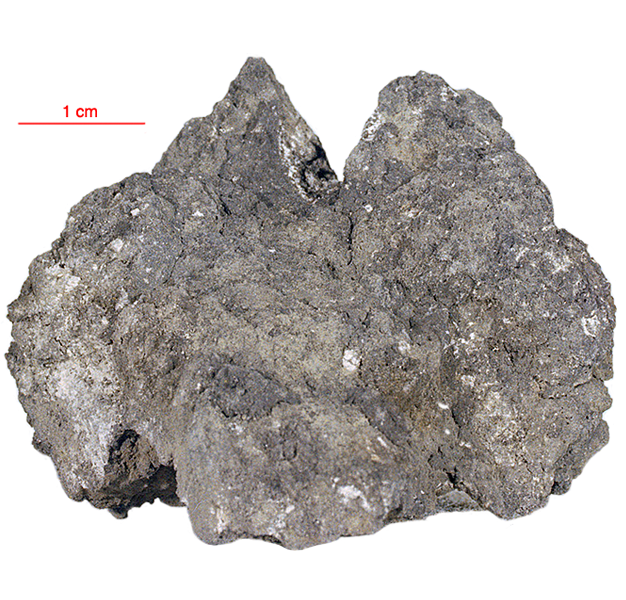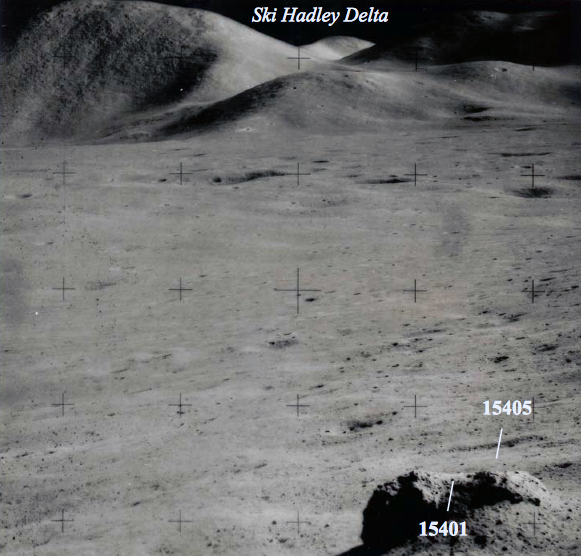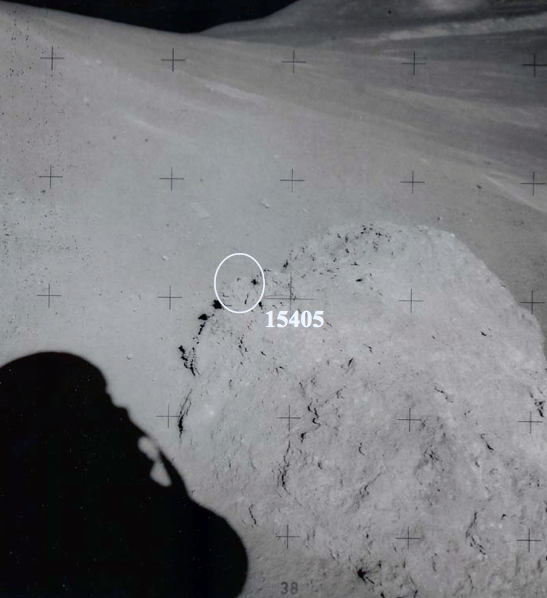
Fact sheet
15405 is a clast-bearing impact-melt rock with a crystalline matrix made up of fine-grained intergrown pyroxene, plagioclase and ilmenite laths. Prominent clasts include mineral fragments of plagioclase and pyroxene, along with lithic clasts of KREEP basalt (present in our thin section), granite and quartz monzodiorite. Flow banding in the matrix includes small irregularly-shaped vugs. The clast population of 15405 generally lacks fragments of mare basalt, glass, anorthosite, norite or troctolite, but is instead rich in KREEP basalt (clasts visible in rotations 1 & 2).
The sample weighed 513.1 grams before analysis. Unfortunately a well defined age was not possible to determine.
Further details of this and other Apollo samples are here: http://curator.jsc.nasa.gov/lunar/
The Apollo 15 landing site was in the Apennine Highlands, and close to Hadley Rille — a long, narrow winding valley. Approximately 76 kg of lunar material, including soil, rock, core-tube and deep-core samples, were returned to Earth.
This mission was the first flight of the Lunar Roving Vehicle which allowed the astronauts to venture further from the Lunar Module than in previous missions. During three periods of extravehicular activity, or EVA, on July 31st, and August 1st and 2nd, Scott and Irwin completed a record 18 hours, 37 minutes of exploration, travelling 17.5 miles, in the first car that humans had ever driven on the Moon.
Apollo 15 was launched on 26 July 1971.








